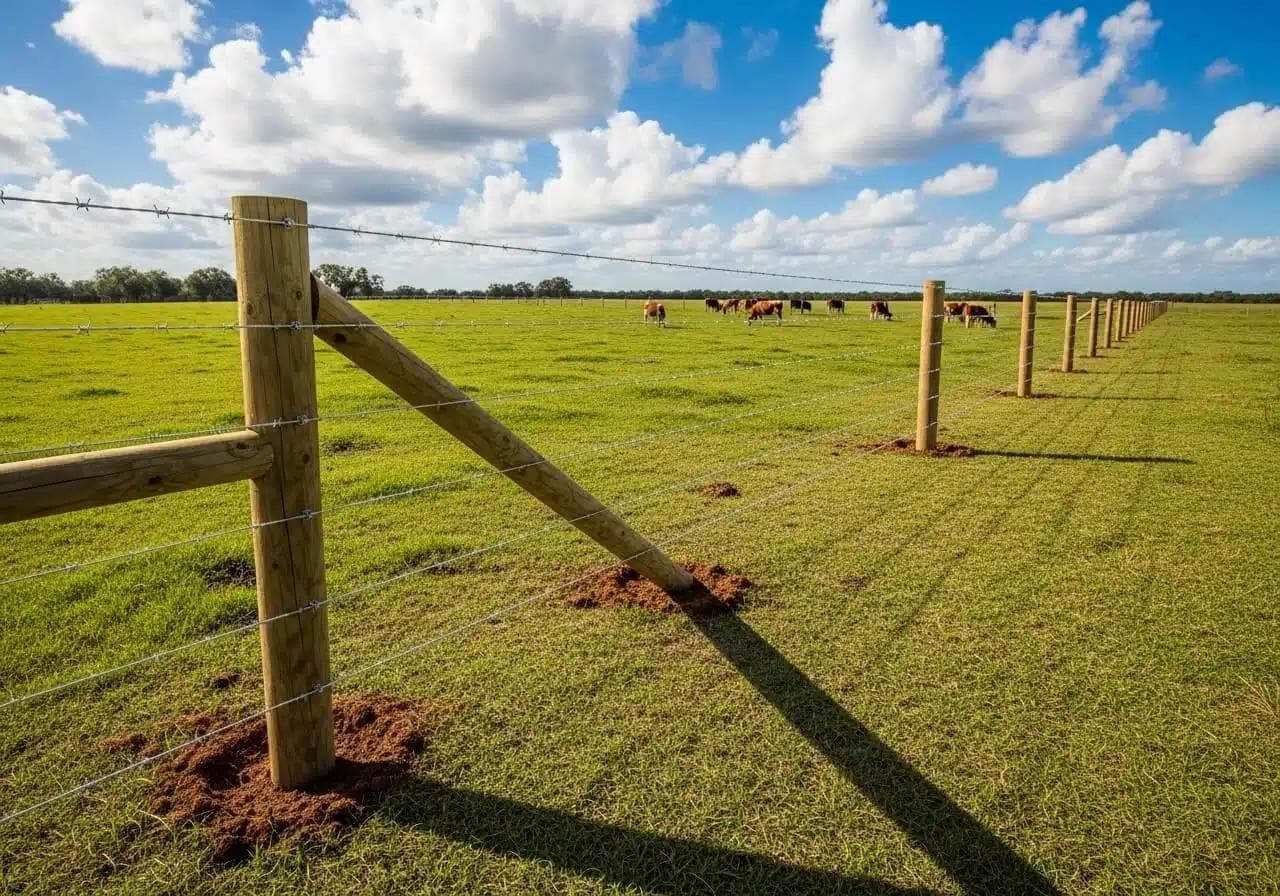
How Many Strands of Barbed Wire Is Best For Cattle?
The Modern 4 to 6 Wire Standard
You want a fence that keeps cattle in and headaches out. Pick too few wires and animals wander; over-build and you burn cash. For a deeper planning checklist, see our Cattle Fencing Guide. For professional help building durable enclosures, explore our Cattle Fence Installation services
Four-Strand Fencing: Best for Low Stock Pressure
A four-wire fence works well as an interior divider where cows already respect boundaries or for calm herds on light rotation. Use it to split pastures, not to guard the property line.
The Five-Strand Sweet Spot
For most perimeter runs, five strands strike the perfect balance of security, visibility, and budget. This setup is a common choice in our Barbed Wire Fence Installation projects across the Southeast. Decades of Panhandle and South Georgia ranch data show that a properly tensioned five-wire fence holds cows and calves with minimal maintenance.
Six or More Strands: When Extra Muscle Matters
- Bulls in the pasture– heavier frame, higher drive
- High-density lots– holding pens, feed lanes, or crowded paddocks
- Road frontage– one escape can spell disaster
Add a sixth or seventh line to boost height and wire density where force or liability is greatest. Heavier livestock operations often pair barbed wire with High Tensile Fence Installation for added strength.
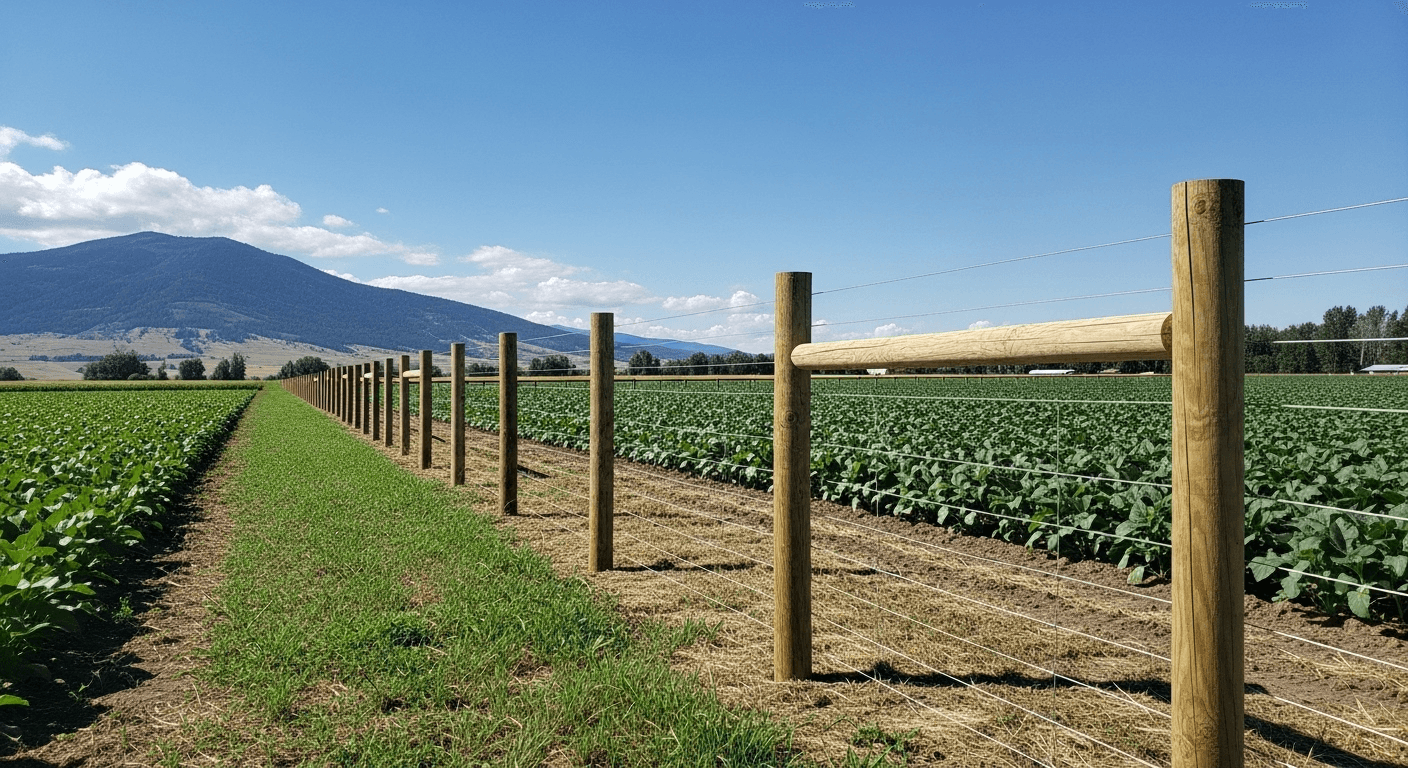
Critical Specs Beyond Strand Count
Optimal Height and Wire Placement
Set the top wire 48-54 in. above ground, roughly shoulder level for adults. Space the remaining lines 6-10 in. apart. In deer country, widen the top gap to 10-12 in. to reduce entanglements while tightening the lower gaps to block calves from crawling under.
Florida, Alabama, and Georgia Regulations
- Florida: “Legal fence” equals at least three wires at three ft, but five wires at 48 in. is the practical norm
- Alabama: Some classes require a five-ft overall height
- Georgia: County ordinances vary, so always confirm before you build
Professional contractors know the local code and save you expensive tear-outs later.
Why Materials Matter More Than You Think
Choose Class III galvanized wire, triple-coated for double (or triple) the lifespan of Class I. Anchor with .60 CCA-treated posts and stout H-braces set deep enough to resist sandy soils and hurricane gusts.
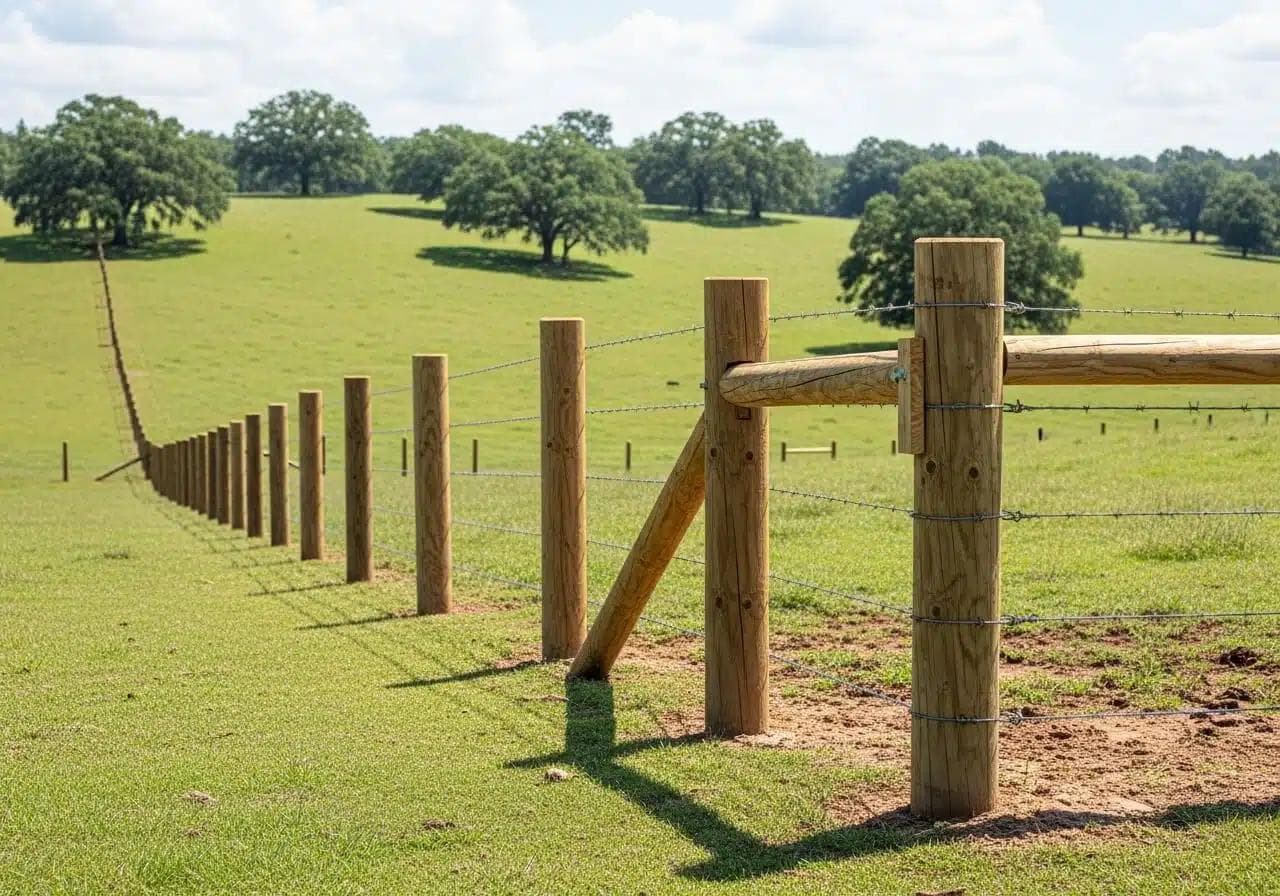
Building a Fence That Lasts in the Southeast
Need Help?
Get expert fencing advice and free quotes. Our team is ready to help with your project.
Available Mon-Fri, 8am-6pm EST
Tackling Sandy Soil, Humidity, and Wildlife
- Sandy soils: Drive corner posts deeper and brace both directions
- Humidity: Extra zinc keeps rust at bay; proper tension stops sag
- Deer pressure: Wider top gap or one smooth hot wire deters jumps
What a Quality Fence Really Costs
Expect $3-$6 per linear foot for professional installation. Cheaper shortcuts invite costly repairs; invest once and avoid constant patch jobs.
Should You Add an Electric Wire?
One low-profile, charged line at 24 in. teaches stock to respect the fence without ever feeling barbs and cuts predator numbers by up to 70 percent, proven in Decatur County, GA. Our Electric Fence Installation options make this upgrade simple and safe for cattle and calves.
Ranchers in Florida, Alabama, and Georgia face unique challenges. From sandy soil to high humidity and wildlife pressure, building a fence here requires local expertise. That’s why ranchers across the region trust Bomann Fencing for Livestock Fence Installation built for the Southeast climate.
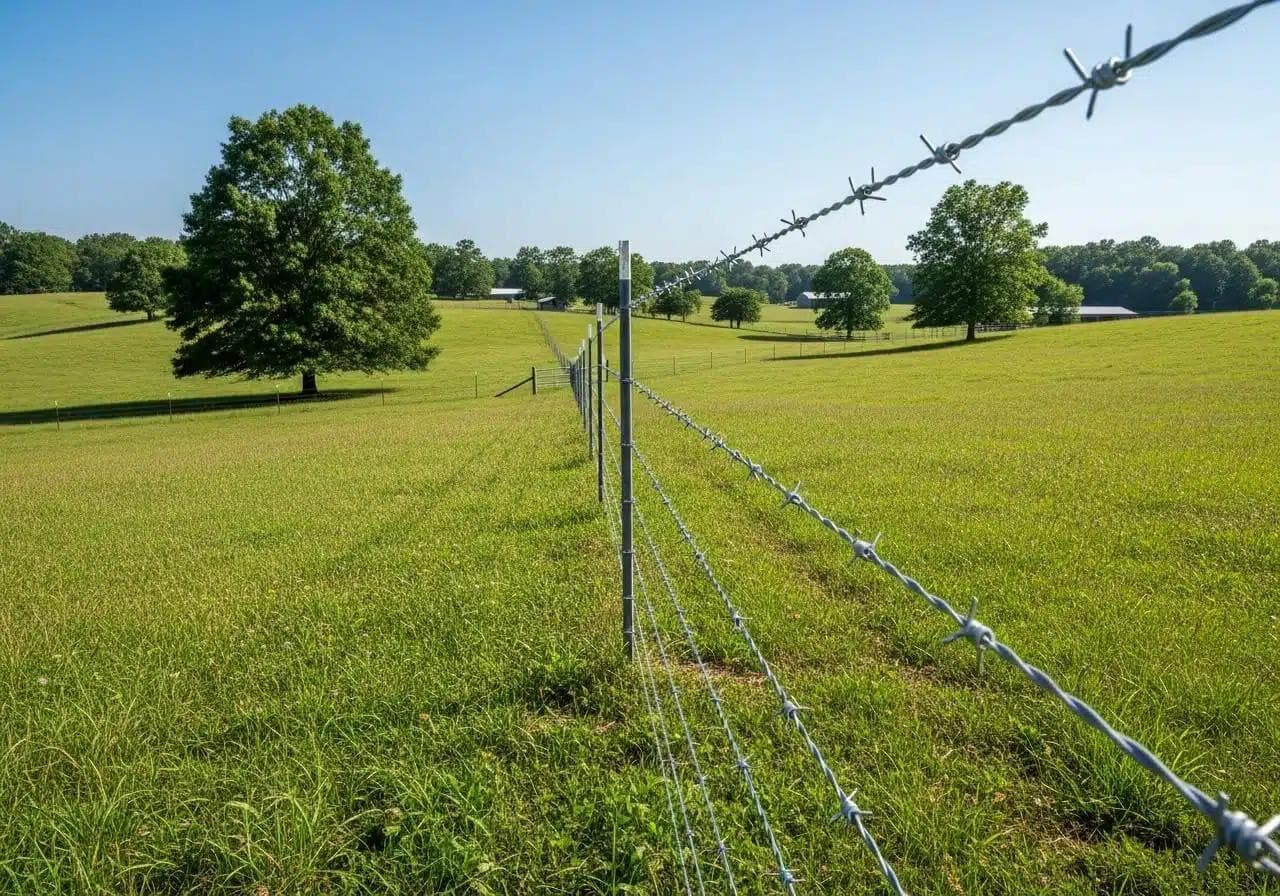
Frequently Asked Questions
How many wires are required by law in Florida?
Minimum is three at three ft, but five at 48 in. is the recommended perimeter standard.
What height works best for a five-wire cattle fence?
Aim for 48-54 in. overall; this lets you space five lines for both cows and calves.
Is four-wire fencing safe for bulls?
No. Bulls need at least six tightly spaced lines and extra height.
Where can I find help building a fence in South Alabama?
Contact an experienced agricultural fencing crew. Bomann Fencing serves Andalusia, Dothan, Enterprise, and the wider region.
Class I vs. Class III galvanized wire: what’s the difference?
Coating thickness. Class III lasts two-plus times longer in humid climates thanks to a heavier zinc layer.
Get a Fence That’s Built Once and Built Right
A properly spaced five- to six-wire fence, 48-54 in. high and built with premium materials, is the most reliable, cost-effective way to safeguard your herd in the Southeast. For a side-by-side comparison of barbed wire with other options, check our Types of Fencing for Cattle resource. Ready for a fence that works as hard as you do? Reach out to Bomann Fencing for a free, no-obligation quote across the Florida Panhandle and South Alabama.
Share this article
Related Posts
Need Help?
Get expert fencing advice and free quotes. Our team is ready to help with your project.
Available Mon-Fri, 8am-6pm EST
Related Posts
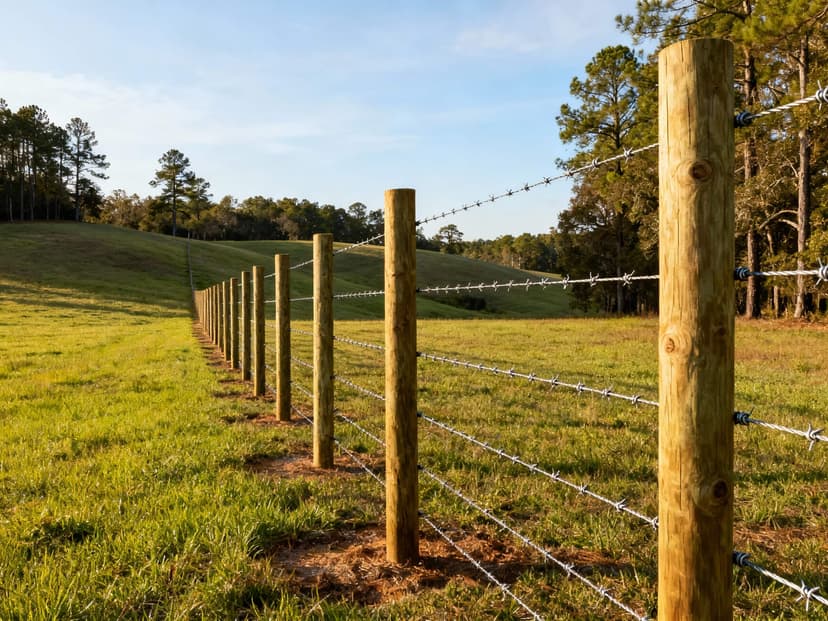
Game Fence Guide: Choosing the Best for CWD & Asset Protection
Why a High-Security Game Fence is a Critical Investment For landowners with large properties, a high-security game fence...

5 Goat Fence Ideas to Keep Your Herd Safe in the Southeast
Top Goat Fence Ideas for Southeastern Farms Your goats are clever, curious, and natural escape artists. Here in the Sout...
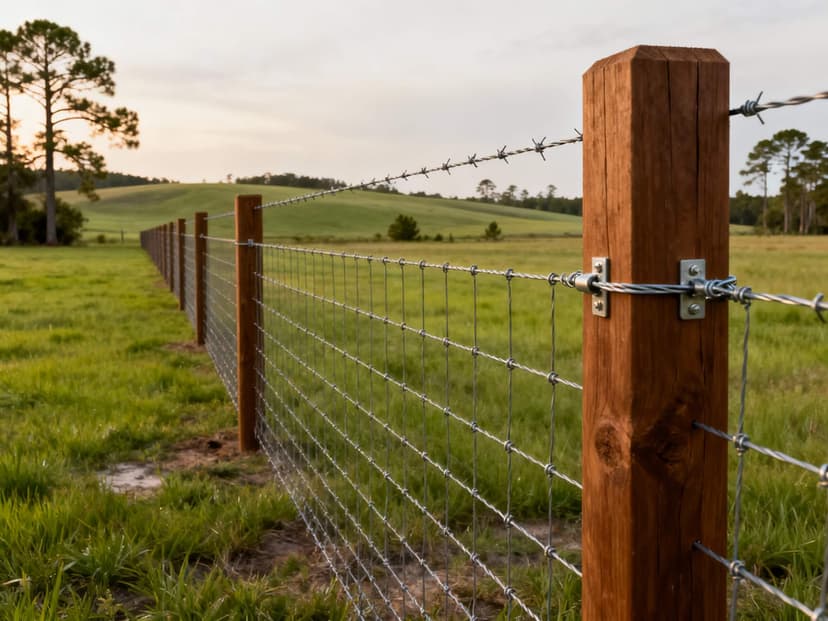
A Farmer's Guide to Stock Fence Wire in the Southeast
Why a Quality Wire Coating is Non-Negotiable in the Southeast Living and working in the Southeast means dealing with a u...
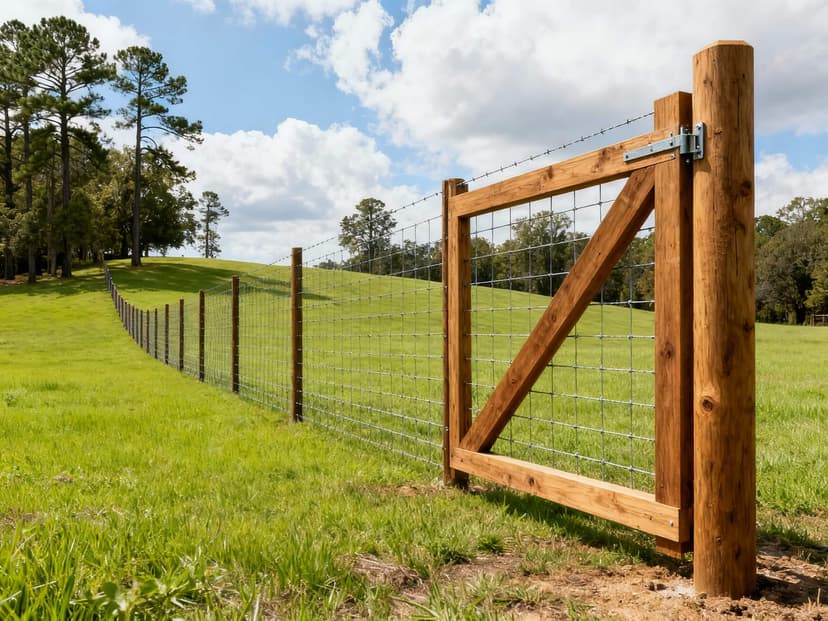
Stock Fencing Guide: Choosing the Best for Southeast Farms
A Complete Guide to Stock Fencing for a Southeastern Farm Choosing the right stock fence is one of the most critical dec...
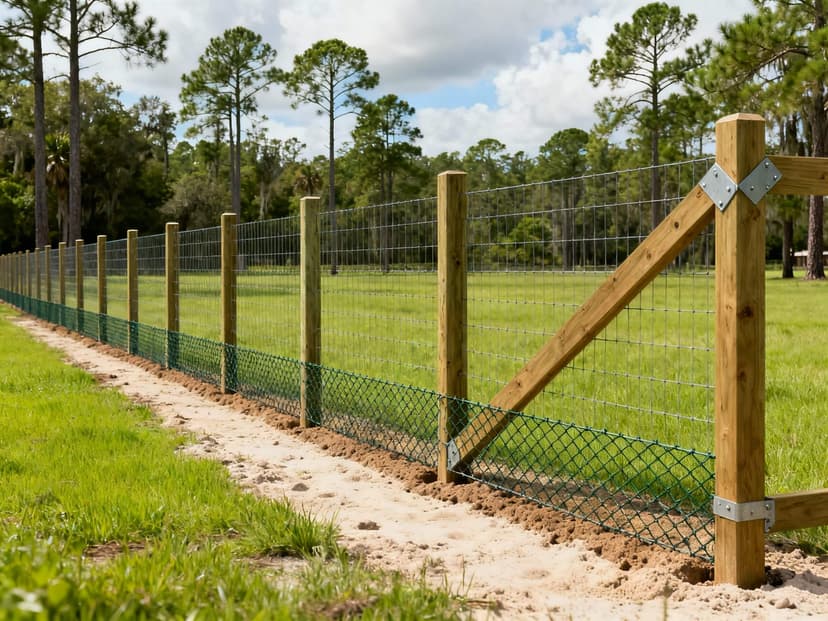
Escape Proof Goat Fencing: A Complete Guide
Why Goats Are Master Escape Artists If you've ever owned goats, you know they are clever, persistent, and surprisingly a...






